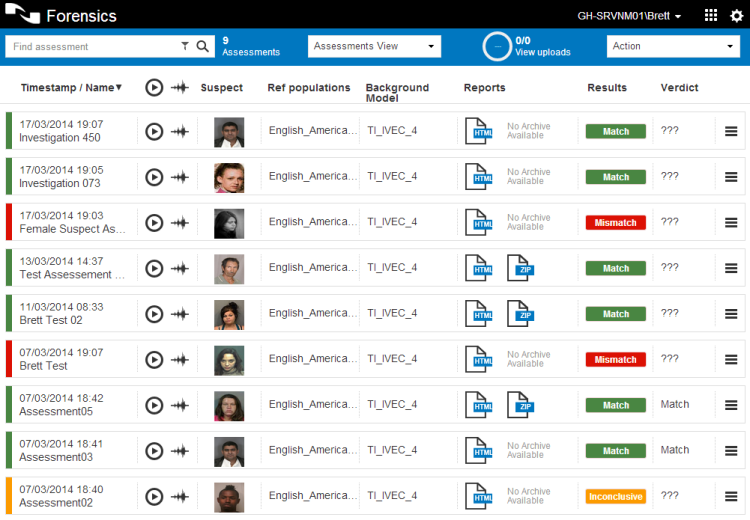Nuance, famous for its Dragon Dictate speech-to-text software, is out with an easier-to-use version of its voice biometric technology for law enforcement. But at least one audio expert raises questions about the difficulty of accurate voice identification.
Nuance Forensics, announced Tuesday by the Burlington, Massachusetts-based Nuance Communications, is intended to help with identifying – or ruling out – a suspect based on audio files taken during investigations.
Nuance said that its technology “delivers accurate and unique identifying characteristics, akin to DNA and fingerprint evidence.” The software is designed to filter out a voice of interest and includes algorithms to automatically ID gender, dialect, and language.
“I’m not aware of a tool that is able to distinguish voices with such precision” as DNA or fingerprints, forensic audio engineer Paul Ginsberg told VentureBeat.
Ginsberg, President of Pro Audio Labs in Park Ridge, N.J., consults with the FBI, Secret Service, and other law enforcement agencies, and has appeared as an expert on CNN and other news networks.
“In order to have an exact match [using current tools], everything has to be the same,” he said – the microphones used, the words spoken, whether the voice is over the phone. Otherwise, he said, variations invite different opinions by different experts.
“I have seen experts on different sides of a courtroom look at the same squiggles and come to different conclusions,” he said.
‘Just click on a button’
Ginsberg recalled seeing on TV one audio expert say that a biometric software package, called Easy Voice Biometrics, had eliminated George Zimmerman as the person who screamed in a recording connected to his trial for the shooting of Trayvon Martin. “I have the same $5,000 software package,” Ginsberg said, adding that it was not designed to identify someone based on a distorting scream.
Because of these issues, Ginsberg said that as a scientist, he shies away from voice identification and prefers to focus on enhancing audio recordings and authenticating that a recording has not been altered.
If there was a reliable voice ID tool, he said, “That would be great.”
Brett Beranak, principal solutions marketing manager at Nuance, told VentureBeat that the Nuance voice biometrics technology “has been used all around the world for over 12 years,” including courtrooms. He pointed in particular to its widespread commercial use for voice biometrics, such as verifying individuals trying to conduct financial transactions over the phone with financial institutions like Wells Fargo. The company said it has 80 percent of the market that uses voiceprint identification software to automate fraud detection.
“The difference [between the earlier Nuance technology and the new Nuance Forensics],” he said, “is that now there is an intuitive user interface to get access to the technology.” Instead of running an audio file through the Nuance biometrics engine, “now you just click on a button.”
Beranak said that the similarity to fingerprint identification is that Nuance Forensics delivers “the same statistical assessment of the validity of the evidence” or of a voice match, assigning a percentage to the degree of certainty. A high quality recording can deliver a high quality level of certainty, he said, but matches between “less than optimal recordings” of different kinds can also be reliably assessed.
He countered Ginsberg’s concerns by saying that, instead of experts providing their opinion, the Nuance technology conducts its statistical assessment automatically. For varying conditions of audio recording – one recording from a phone, another from a microphone, for instance – Beranak noted that Nuance has designed its tools “to eliminate unique signatures of [recording] devices.”
VentureBeat's mission is to be a digital town square for technical decision-makers to gain knowledge about transformative enterprise technology and transact. Learn More

